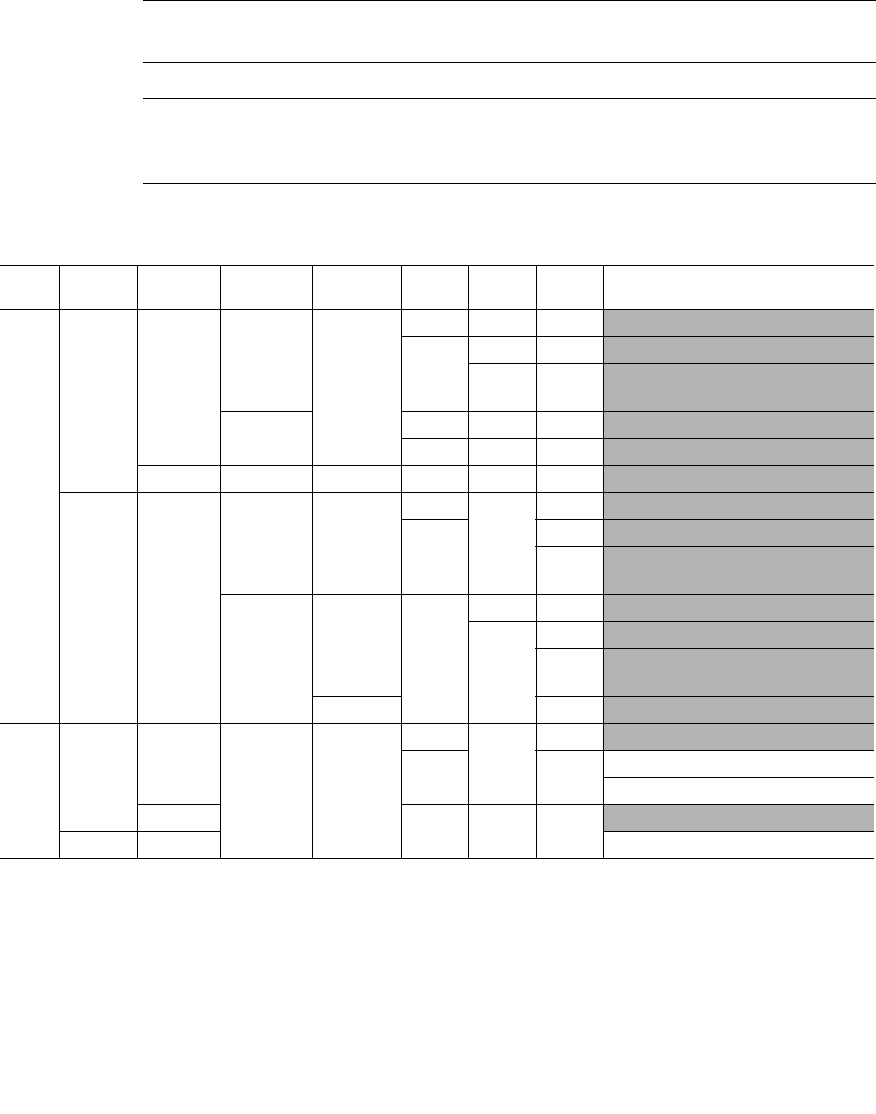
66 SPARC JPS1 Implementation Supplement: Fujitsu SPARC64 V • Release 1.0, 1 July 2002
summarizes the behavior of SPARC64 V floating-point hardware depending on
FSR.NS.
Note –
The result and behavior of SPARC64 V of the shaded column in the tables
Table B-5 and Table B-6 conform to IEEE754-1985 standard.
Note –
Throughout Table B-5 and Table B-6, lowercase exception conditions such as
nx, uf, of, dv and nv are nontrapping IEEE 754 exceptions. Uppercase exception
conditions such as NX, UF, OF, DZ and NV are trapping IEEE 754 exceptions.
TABLE B-5
Floating-Point Exceptional Conditions and Results
FSR.N
S
Denorm :
Norm
1
1. One of the operands is a denormalized number, and the other operand is a normal or a denormalized number
(non- zero, non-NaN, and non-infinity).
Result
Denorm
2
2. The result before rounding turns out to be a denormalized number.
Pessimistic
Zero
Pessimistic
Overflow UFM OFM NXM Result
0
No Yes
Yes
—
1 ——
UF
0 — 1 NX
— 0
uf + nx, a signed zero, or a signed
Dmin
3
3. Dmin = denormalized minimum.
No 1 ——UF
0 ——
unfinished_FPop
4
4. If the FPop is either
FADD
{
s,d
}, or
FSUB
{
s,d
} and the operation is 0 ± denormalized number, SPARC64 V does
not generate an unfinished_FPop and generates a result according to IEEE754-1985 standard.
No —————Conforms to IEEE754-1985
Yes n/ a
Yes —
1
—
— UF
01
NX
0 uf + nx, a signed zero, or a signed
Dmin
No Yes —
1 —
OF
01
NX
0
of + nx, a signed infinity, or a
signed Nmax
5
5. Nmax = normalized maximum.
No ——
unfinished_FPop
1
No Yes
——
1 ——
UF
0 — 1NX
0 uf + nx, a signed zero
No ———
Conforms to IEEE754-1985
Yes — TABLE B-6


















